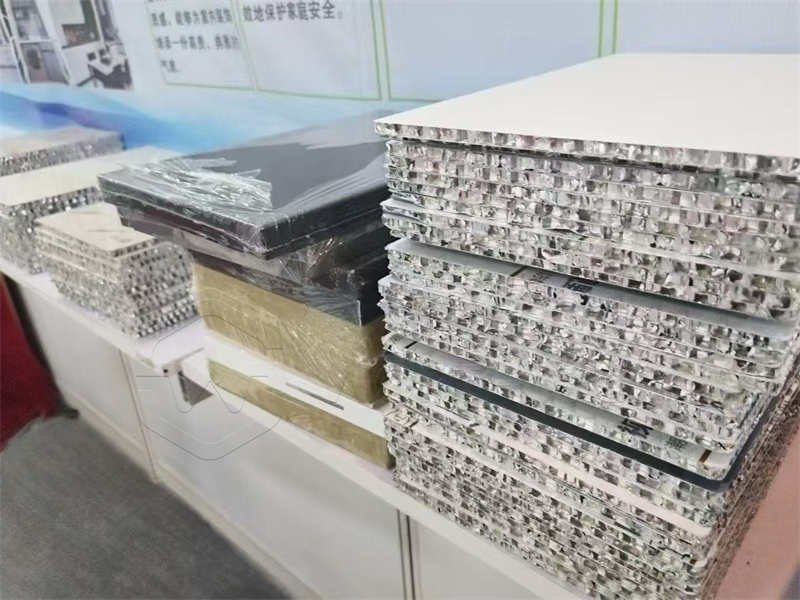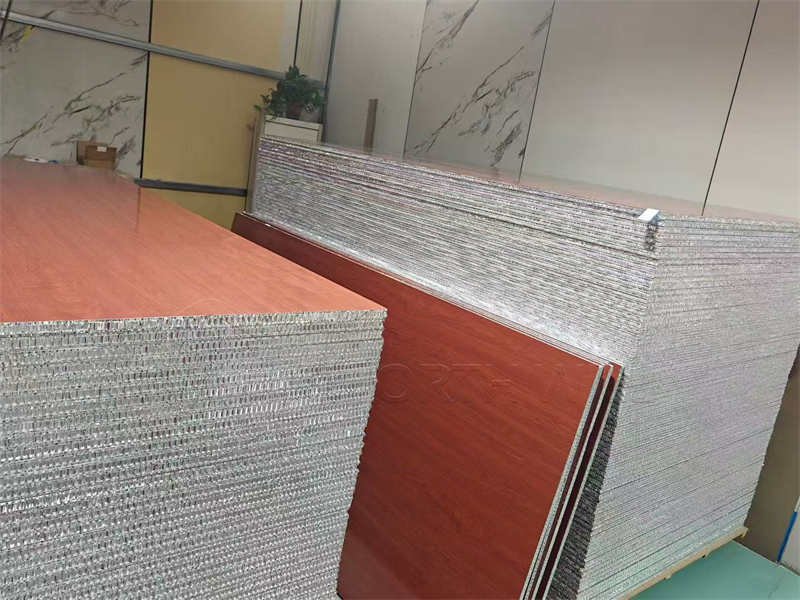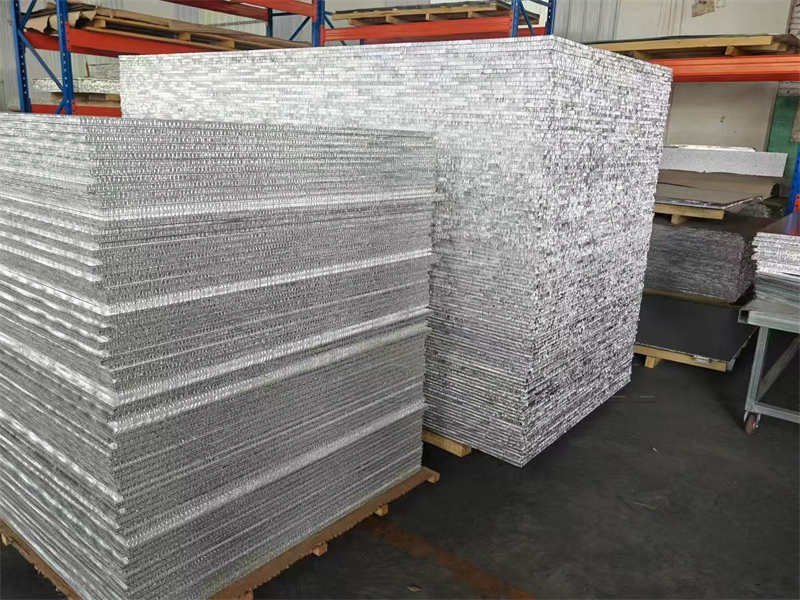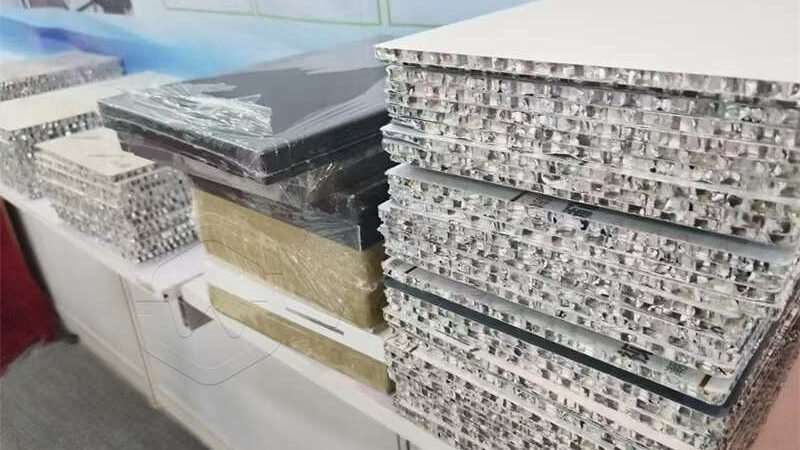Aluminum honeycomb panels are innovative construction materials renowned for their exceptional strength-to-weight ratio. They are widely utilized across diverse industries where lightweight, rigid, and durable solutions are paramount. A key factor influencing their performance and suitability for specific applications is their aluminum honeycomb panel density.

Understanding Aluminum Honeycomb Panel Density
Aluminum honeycomb panel density refers to the mass per unit volume of the entire panel. It is a critical characteristic as it directly impacts the panel’s weight, structural integrity, and cost-effectiveness. A lower density often signifies a lighter panel, which is crucial in sectors like aerospace or transportation, where every gram saved is significant. However, density is not solely about lightness; it also correlates with the panel’s strength and rigidity.

Several key factors contribute to the overall aluminum honeycomb panel density:
| Factor | Description | Impact on Density |
|---|---|---|
| Core Cell Size | The size of the hexagonal cells within the honeycomb core. | Smaller cells generally mean more aluminum foil, leading to higher density and improved compressive strength. |
| Core Foil Thickness | The thickness of the aluminum foil used to construct the honeycomb core. | Thicker foils increase the core material, thereby raising the panel’s density and enhancing mechanical properties. |
| Face Sheet Thickness & Material | The thickness and material (typically aluminum) of the outer layers bonded to the core. | Directly contributes to the total panel density and significantly influences overall strength and stiffness. |
| Adhesive Type & Amount | The specific type and quantity of adhesive used to bond the core to the face sheets. | Can subtly affect the overall density, though its primary role is structural bonding. |
Classification of Aluminum Honeycomb Panels

Aluminum honeycomb panels can be classified in various ways, often based on their core structure, face sheet material, or intended application. While the core material is predominantly aluminum for aluminum honeycomb panel density considerations, face sheet materials can vary significantly.
| Classification Criterion | Description | Examples/Notes |
|---|---|---|
| Core Geometry | Based on the shape and expansion of the honeycomb cells. | Standard hexagonal, over-expanded (for curved applications), or custom geometries. |
| Face Sheet Material | The material used for the outer layers of the panel. | Aluminum (most common), Stainless Steel, Fiberglass Reinforced Plastic (FRP), High-Pressure Laminate (HPL), Titanium. |
| Application Type | Panels designed for specific industries or functional requirements. | Marine-grade, Fire-rated, Cleanroom panels, Structural panels. Each may have unique aluminum honeycomb panel density requirements. |
| Surface Finish | The aesthetic or protective treatment applied to the face sheets. | Mill finish, PVDF/PE coated, Anodized, Powder Coated, Wood Grain, Stone Veneer. |
Thickness of Aluminum Honeycomb Panels

The overall aluminum honeycomb panel thickness is a critical dimension that dictates its rigidity, insulation properties, and overall weight. These panels are available in a broad spectrum of thicknesses, typically ranging from 6mm up to 300mm or even more, depending on the specific application.
| Thickness Range | Typical Applications | Key Characteristics |
|---|---|---|
| 6mm – 20mm | Interior decorative panels, furniture components, signage, lift interiors. | Lightweight, good flatness, easy to handle. Lower overall aluminum honeycomb panel density for lighter applications. |
| 20mm – 50mm | Architectural facades, cleanroom walls, vehicle interiors, ceilings. | Excellent rigidity and flatness over larger areas, balanced weight. Common for general construction. |
| 50mm – 100mm+ | Demanding structural applications, large-span flooring, specialized industrial uses. | Maximum stiffness and strength, superior insulation properties. Higher overall aluminum honeycomb panel density to achieve robust performance. |
| Custom Thicknesses | Specific project requirements (e.g., very thick for structural cores). | Tailored for unique load-bearing or insulation needs. |
Selecting the correct aluminum honeycomb panel thickness is crucial for achieving the desired performance without incurring unnecessary weight or cost.
Alloy Types for Aluminum Honeycomb Panels
The specific aluminum alloys used for both the honeycomb core and the face sheets significantly influence the panel’s properties, including its strength, corrosion resistance, and workability. While the alloy primarily impacts material strength, it indirectly contributes to achieving the desired aluminum honeycomb panel density by allowing for thinner yet strong components.
Common Aluminum Alloys Used:
| Component | Alloy Type | Key Characteristics & Benefits |
|---|---|---|
| Face Sheets | 3003 H14 | General-purpose alloy, good formability, moderate strength, cost-effective. Widely used for standard panels. |
| 5052 H32/H34 | Superior corrosion resistance (especially in marine environments), higher strength than 3003. Ideal for outdoor and humid applications. | |
| 5005 H14 | Excellent anodizing properties, provides a durable and aesthetically pleasing finish. Used when surface aesthetics are critical. | |
| Honeycomb Core | 3003 | Most common alloy for core, offering a good strength-to-weight ratio and cost-effectiveness. Contributes to optimal aluminum honeycomb panel density. |
| 5052 | Selected for applications requiring enhanced corrosion resistance and higher core strength, leading to a more robust and durable core structure. |
The choice of alloy depends on the specific demands of the application, such as environmental exposure, required load-bearing capacity, and aesthetic finish.
Packaging of Aluminum Honeycomb Panels
Proper aluminum honeycomb panel packaging is essential to protect these valuable materials during storage and transportation. Due to their lightweight nature and often large dimensions, panels can be susceptible to bending, impact, or surface damage if not handled correctly. Effective packaging ensures the panels arrive at their destination in pristine condition, ready for installation.
Typical Packaging Methods:
| Packaging Method | Description | Benefits |
|---|---|---|
| Wooden Crates | Fully enclosed wooden structures for maximum protection. | Prevents bending, impact damage, abrasion, and provides robust security for highly sensitive or smaller shipments. |
| Wooden Pallets | Panels stacked securely on sturdy wooden pallets, often with protective interleaving. | Supports large panel stacks, facilitates forklift handling, prevents surface scratching. |
| Edge Protectors | Corner and edge guards made of plastic, cardboard, or foam. | Protects vulnerable panel edges from chipping, crushing, or abrasion during handling and transport. |
| Stretch Film/Shrink Wrap | Panels tightly wrapped to secure them and protect against external elements. | Guards against dust, moisture, minor surface abrasions, and keeps panels bundled. |
| Desiccants | Moisture-absorbing packs placed inside the packaging. | Prevents condensation and moisture damage, which could affect adhesive bonds or panel finishes. |
Applications of Aluminum Honeycomb Panels
The unique combination of high strength, low weight, and flatness makes aluminum honeycomb panels suitable for a vast array of applications. Their specific aluminum honeycomb panel density can be tailored to meet the precise requirements of each use case.
| Application Sector | Specific Uses | Benefits Offered (related to density, strength, weight) |
|---|---|---|
| Architecture | Facades, wall cladding, roofing, ceilings, interior partitions, sun louvers. | Lightweight reduces building load, high flatness for aesthetic appeal, excellent rigidity for large spans. |
| Transportation | Aircraft flooring, interior partitions, galleys, train components, bus panels, yacht interiors. | Significant weight savings (critical for fuel efficiency), high strength-to-weight ratio, fire resistance. |
| Cleanrooms | Walls, ceilings, doors. | Smooth, non-shedding surfaces, excellent flatness, easy to clean, good insulation properties. |
| Marine Industry | Ship interiors, bulkheads, decks, furniture. | Lightweight, corrosion resistance, high rigidity, often selected for their low aluminum honeycomb panel density for buoyancy benefits. |
| Signage & Displays | Large format signs, exhibition stands, display panels. | Flat, rigid, lightweight substrate for graphics, easy to transport and install. |
| Furniture | Table tops, cabinet doors, office furniture components. | Lightweight, strong, stable, and allows for creative designs without heavy materials. |
| Industrial | Machine covers, enclosures, clean benches, work surfaces. | Durable, lightweight protection, good acoustic damping in some configurations. |
Specifications and Types of Aluminum Honeycomb Panels
To further illustrate the versatility of these panels, here’s a detailed table showcasing typical specifications and how they relate to aluminum honeycomb panel density and other critical properties. Please note that exact figures can vary significantly by manufacturer and specific product.
| Parameter | Common Values/Ranges | Impact/Notes |
|---|---|---|
| Core Cell Size | 3.2mm, 6.4mm, 9.5mm, 19.1mm | Smaller cells increase compressive strength and contribute to a higher aluminum honeycomb panel density. |
| Core Foil Thickness | 0.04mm, 0.05mm, 0.06mm, 0.08mm | Thicker foil improves core strength and overall panel density. |
| Total Panel Thickness | 6mm – 300mm+ | Directly influences rigidity, flatness, and thermal/acoustic insulation; primary factor for panel weight. |
| Face Sheet Thickness | 0.5mm, 0.8mm, 1.0mm, 1.2mm, 1.5mm | Thicker face sheets enhance bending stiffness, impact resistance, and overall panel strength. |
| Typical Panel Density Range | 3 kg/m² – 20 kg/m² (for 10-25mm thick) | Crucial for weight-sensitive projects. Varies greatly based on core and face sheet specifications. |
| Standard Panel Width | Up to 1500mm | Common widths for manufacturing efficiency and ease of handling/installation. |
| Standard Panel Length | Up to 6000mm+ | Longer lengths are possible for large architectural or structural applications, minimizing joints. |
| Aluminum Alloy (Core) | 3003, 5052 | Affects core strength, fatigue resistance, and corrosion resistance. |
| Aluminum Alloy (Face) | 3003, 5052, 5005 | Determines surface finish, overall strength, and corrosion resistance of the panel. |
| Fire Rating Options | A2, B1 (for core or panel assembly) | Important for safety regulations in public and commercial buildings. |
| Thermal Conductivity | ~0.02 – 0.05 W/(m·K) (core) | Excellent insulation properties due to trapped air within the honeycomb cells. |
Why Choose Aluminum Honeycomb Panels?
Choosing aluminum honeycomb panels means opting for a material that offers an exceptional balance of properties. Their lightweight nature significantly reduces structural loads and transportation costs. Their high rigidity and inherent flatness ensure superior aesthetics and performance, even over large spans. Furthermore, they are inherently fire-resistant, corrosion-resistant, and recyclable, making them an environmentally sound choice for many projects. The ability to precisely tailor the aluminum honeycomb panel density allows for highly specific engineering to meet diverse project demands.
What is the density of aluminium honeycomb?
Understanding aluminum honeycomb panel density is fundamental to selecting the right product for any given application. From the microscopic details of the honeycomb core to the overall panel thickness and the specific aluminum alloy used, every element contributes to the panel’s final performance characteristics. With proper classification, selection of appropriate thickness and alloy, and careful packaging, aluminum honeycomb panels continue to be a leading choice for lightweight, high-strength solutions across numerous industries, ensuring durability, efficiency, and aesthetic appeal.
